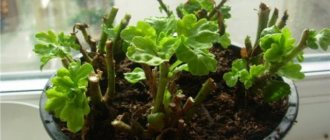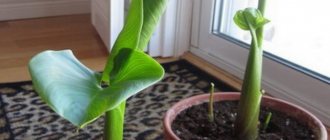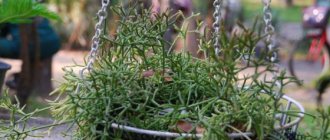Chrysanthemums need to be replanted regularly. The plant is a perennial. After a certain time, it needs to change its place, otherwise the intensity of growth and flowering will decrease. It is important for gardeners to know the nuances of autumn and spring transplantation of chrysanthemums so that the bush quickly takes root and blooms.
In order for chrysanthemums to bloom magnificently on the site, the bushes must be replanted regularly
When to replant chrysanthemums
The shrub can grow in one place for up to 2-3 years. After this time, the chrysanthemum needs to be replanted. If this procedure is not followed, the bush will begin to hurt, the flower baskets will begin to become smaller, and over time, flowering will stop completely. And, of course, many are interested in the question of when is the best time to replant a plant so as not to cause severe harm to it.
The most favorable time to transplant chrysanthemums is spring. In the fall, the bushes need to be dug up along with a lump of earth, planted in a pot and put in a dry basement for the winter. However, winter-hardy varieties of flowers can be replanted in the fall. It is best to do this in late September-early October. The ideal day for planting would be a cloudy or slightly rainy day.
Why is it necessary to replant a plant in spring? The fact is that for a culture, moving from one place to another is a great stress. If this is done in the fall, there is a high probability that the chrysanthemum will not have time to properly strengthen before the cold weather and will not survive the winter.
Another important point is the ease of performing the work. In the spring, after the snow melts, the ground is moist and pliable, which makes the bush much easier to dig out. In this case, the risk of injury to the roots is minimized, while removing the bush from frozen soil is much more difficult.
The time for planting depends on the climatic conditions of the region. Relocation should begin when the weather is warm enough and the threat of frost has passed - approximately at the end of April-beginning of May. Again, you need to replant in cloudy weather or in the evening.
Next, we will consider the features of spring and autumn chrysanthemum transplantation.
How to divide chrysanthemums
Usually chrysanthemums are propagated by cuttings, dividing the bush or separating young shoots from the mother bush. There are two periods when chrysanthemums can be divided. This:
- June,
- October.
The process of dividing chrysanthemums is very simple. Dig up the bush, divide it into parts and immediately plant it in the prepared bed.
Cuttings of chrysanthemums. In the fall, cut shoots from the bush 7–10 cm long and plant them in perlite or washed river sand, poured into a seedling container in a layer of 3–4 cm. In a few days you will have rooted plants.
Spring transplant
Transplanting chrysanthemums at this time of year involves dividing the bush. All work is carried out in stages and consists of the following activities:
- Choosing a site for a flower bed. It is best to choose an area that is well lit by sunlight. Groundwater should not lie very close to the soil surface. But, if there is such a problem, then coarse sand must be added to the holes. This way we will provide the transplant site with a drainage system. Before replanting, dig up the flowerbed to the depth of a spade and remove all plant debris.
- Preparation of bushes. If the soil in the flowerbed has dried out before replanting, it needs to be moistened abundantly. This way the chrysanthemum is easily removed from the ground and its roots are not damaged.
- Dividing the bush. After you have removed the chrysanthemum, carefully shake off the soil from the roots. Next, take a sharp knife and divide the mother bushes so that a root with shoots remains on each part.
- Transfer. Dig holes at a distance of 50 cm from each other. They should be 18-22 cm deep. Carefully straighten the roots of the seedlings, place them in the holes and sprinkle them with a nutrient composition, that is, soil mixed with peat or humus. Lightly compact the soil with your palms.
- Water the bushes with water. To do this, it is better to use settled or rainwater. Make sure that the drops do not fall on the foliage, as this may negatively affect the decorative appearance of the bush.
In the first few weeks after transplanting, the flowerbed should be moistened as often as possible. It is important to avoid stagnation of water, otherwise the roots will rot. After 2 weeks, it is permissible to apply fertilizer. For chrysanthemums, liquid mineral fertilizers containing nitrogen, phosphorus and potassium are suitable. Don’t forget about loosening, this will saturate the plant’s roots with oxygen.
It is worth noting that only frost-resistant varieties that have wintered in open ground need to be replanted using this method in the spring. Bushes that have been dug up, planted in a pot and placed in the basement must first be prepared. They need time to get stronger and adapt to the new temperature regime. To do this, pots with bushes need to be moved outside 7-10 days before planting. Next, transplantation and further care are carried out in the above manner.
Fertilizing transplanted chrysanthemums in autumn
Preparation of chrysanthemums for winter begins in different regions in different ways and depending on their variety. There are varieties that need to be dug up in the fall and then stored in a dark and cool place. And some varieties overwinter well in the ground. They begin feeding from the end of August to the beginning of September. This is the most suitable period for applying fertilizer, since the soil has not yet cooled down and the flower can absorb nutrients well. If fertilizers are applied later, then not all nutrients will be absorbed and the flower will go into winter weakened. For the full development of the root system, chrysanthemums are fed with fertilizers. Every bush is fertilized. Organic matter saturates the soil best. But you can enhance the positive effect with superphosphate and potassium preparations. The main thing to remember is that when using chicken manure or compost, they must be diluted with water. The ratio of organic matter and water is one to ten. Otherwise, you can harm the roots of chrysanthemums.
Autumn transplant
In autumn, chrysanthemums still bloom in the garden. Flowering bushes need to be replanted with extreme care, since the slightest damage to the roots can have a detrimental effect on them. Gardeners are still arguing about the autumn transplantation of chrysanthemums. Some don’t see the point in this, while others, on the contrary, argue that this way the root system develops better and frost resistance increases.
The process of transplanting chrysanthemums in autumn is practically no different from spring, but has its own characteristics:
- Preparing the flower bed. While digging the soil, add organic fertilizers - compost or peat. Do not overdo it with the quantity, there should be 500-600 g per 1 square meter. m. Otherwise, the plant will increase its leaf mass to the detriment of its flowering.
- Preparation of the bush. Cut the roots around the plant within a radius of 20-30 cm using a shovel. This promotes the formation of new roots and will help the chrysanthemum quickly take root in a new place.
- Digging up a bush. Water the plant generously right at the root and carefully dig it up along with a lump of earth.
- Transfer. Since we will plant the bush with a lump of earth, the depth of the holes must be increased to 40 cm. Water the soil with the “Kornevin” solution and carefully place the bush with the soil in the hole, cover it with soil and compact it with your palms.
- Water the bush generously.
When can you replant?
Many gardeners believe that it is best to replant chrysanthemums in early spring, since at this time the soil contains a sufficient amount of moisture, which contributes to the rapid rooting of the plant in a new place. Growing a plant involves the following types of transplants:
- planting seedlings in open ground;
- transplanting a plant from a pot into open ground;
- transplanting winter-hardy chrysanthemum from one place to another;
- replanting non-frost-resistant chrysanthemum.
Chrysanthemum tolerates replanting well, so in some cases this can be done in the summer.
The easiest way to propagate chrysanthemums is by seeds; they are sown at the end of February in boxes with soil, which includes turf, peat and sand in a ratio of 1: 2: 1. The boxes are put in a semi-dark place until germination, and soil moisture is controlled. After the seedlings form 2 true leaves, they are picked, the cups with seedlings are placed in a place where the sun illuminates no more than 5 hours a day. Seedlings are planted in open ground at the end of May, when the threat of night frosts has passed.
The time for planting planting material bought in a pot in open ground in open ground depends on when it was purchased. If you bought a chrysanthemum in the fall, after September 15, there is a chance that it will not have time to take root before frost and will simply die. In this case, the stems of the plant are cut off, leaving no more than 10 centimeters in height, and stored until spring in a basement or heated garage.
Winter-hardy perennial chrysanthemum (the most popular is the Korean small-flowered chrysanthemum) can be left to grow in one place for 3-4 years. Since the chrysanthemum has rapid growth, its root system within a short period of time forms many small shoots that are forced to feed from the main root, which leads to rapid depletion of the soil at the location of the bush.
The weakening of a plant from a lack of nutrients can be determined by the flowers: they begin to become smaller and lose shape. This means that the chrysanthemum needs to be transplanted to another place, with a more fertile soil composition. It is better to replant perennial plants in the fall, 20 days before the onset of permanent frost, so that the stems have time to take root. A chrysanthemum transplanted in the fall will bloom earlier next year than one transplanted in the spring.
It is better to replant a non-frost-resistant perennial plant in the spring, this will help preserve the rare appearance of the flower. Compared to autumn replanting, spring replanting delays the onset of plant flowering, but this disadvantage is easily compensated for by early flowering annuals.
You can replant a chrysanthemum at home into a larger pot at any time of the year.
If you follow certain rules, you can also replant a flowering plant.
Nuances of the procedure
Transplanting the plant to another place in the autumn is very beneficial in terms of development and strengthening of the root system. Strong frost resistance develops, which will have a great effect on the winter quarters. The best period for replanting a plant begins after a stable warm temperature has been established. In spring, it is excellent to plant chrysanthemums sprouted at home, varieties that bloom in summer.
To replant chrysanthemums in open ground, it is necessary to choose the right variety depending on the climatic conditions of the region. Today, many varieties have been developed that can withstand even the coldest winters and do not require additional care or digging. Chrysanthemums should be replanted in the fall carefully, following the rules, then the plant will delight with its flowering for many years.
During flowering
The most favorable time for chrysanthemum to be replanted is from September 15 to October 10. Rainy weather during this period will contribute to better rooting and adaptation in open ground.
During flowering, chrysanthemum is more vulnerable, so you should refrain from replanting the flowering plant in October. The most favorable time to replant chrysanthemums is the beginning of September, then the flowering plant will have time to take root before frost.
You can replant a blooming chrysanthemum in the fall using the following algorithm:
- prepare the area for replanting, for which you first dig a trench of arbitrary length, 50 cm deep;
- the bottom must be drained with river sand, which will improve the outflow of excess moisture;
- prepare an earthen substrate from the top fertile layer of soil and peat;
- place the plants one at a time in the trench, leaving an interval between them;
- pour water at room temperature.
Transplanting from a pot
In order to properly transplant a chrysanthemum in open ground conditions, it is necessary to take into account many factors, especially pay attention to the planting sites
- The place for transplantation should be well lit.
- Lowlands that can be flooded and places with high groundwater levels should be avoided.
- Autumn planting requires careful checking of weather conditions for the next 2 weeks; if the newly transplanted plant is exposed to frost, it will be lost.
- The soil for planting must contain a neutral or slightly acidic pH.
- Flowerbeds should not be placed in a shaded area, otherwise there will be no flowering.
- For replanting in the spring, you need to choose early varieties, and in the fall - late ones.
Replanting chrysanthemums in the fall, as in the spring, should be done in previously prepared places. You cannot plant plants immediately after purchase, if we are talking about the spring thaw, you need to give them time to adapt to outdoor conditions, especially if the chrysanthemum was stored indoors.
Drainage made of stones or broken bricks is placed in dug grooves 50 cm deep. Next, add soil mixed with humus, peat and sand in proportions 1:1. The soil is left for several days so that it is enriched with minerals, and then the chrysanthemum begins to be replanted.
Purchased seedlings in a pot must be carefully removed. To do this, the plant is filled with water, softening the earthen lump. The rhizome should be washed to remove any remaining soil.
Next, place the flower in the hole and sprinkle it with soil, trying to fill all the voids formed when filling the soil. Lightly compact the top layer of soil and water with warm water.
An interval of 20-30 cm should be maintained between plants so that the flowers do not interfere with each other’s growth. Blooming chrysanthemum can be planted at a distance of 40 cm, depending on the size of the bush.
Preparation
Preparing chrysanthemums for transplantation involves the following steps:
- choice of location;
- preparation of planting material.
To replant chrysanthemums, choose an area protected from the wind (for example, near the wall of a house) and illuminated by the sun for up to 5 hours a day. Ideal for the plant is loose, fertile soil with neutral acidity. Heavy soil is fertilized with humus and dug up; when high groundwater passes, sand is added to each hole. Transplantation is carried out in cloudy, cool weather. Chrysanthemum is a moisture-loving plant, but it does not tolerate low areas with stagnant water.
Place to plant chrysanthemums in autumn
Chrysanthemums prefer sunny areas. It is better to lay out the bed on a hill. In the shade the plant looks depressed. The flower is sensitive to groundwater. If they lie close to the roots, good drainage will be required. River sand can be used as a drainage layer.
The soil on the site should be loose, preferably neutral or slightly acidic. If the soil for planting is too heavy, then it is enriched with peat, humus and rotted manure. Add no more than 0.5 kg to each well. fertilizers, otherwise next year the plant will have a good crown, but flowering will be poor.
Procedure for transplantation
Let's look at exactly how to replant chrysanthemums at different times of the year.
In summer
A flowering store-bought chrysanthemum purchased in summer must be transplanted into a pot 2-3 sizes larger. This must be done as quickly as possible, since for sale the plants are placed in small containers with temporary soil. The roots of purchased plants are freed from the earthen clod, washed and disinfected.
Further actions are carried out in stages.
- Place drainage at the bottom of the prepared pot (at home you can use pieces of polystyrene foam), fill it with fertile, loose soil, which can be taken from the site.
- The pot is filled with soil, the plant is placed in it, the soil is lightly compacted, and watered well.
- Keep in a shaded place until rooting, then put on the windowsill.
About the soil mixture and transplantation conditions
Despite the fact that chrysanthemum is considered a garden plant, its potted counterpart requires special soil. It is possible to purchase a store-bought soil mixture, or you can prepare it yourself.
Important : the bright beauty prefers loose soil, but you should fluff it up by hand carefully so as not to damage the rhizome.
Before transplanting a homemade chrysanthemum from a pot into a new container, you should mix the following substrate ingredients:
- turf soil;
- leaf soil;
- humus;
- coarse sand.
It doesn’t matter whether replanting is in spring or autumn, the main thing is that the soil is slightly acidic.
Before use, the soil is heated in the oven for the purpose of disinfection. If the mixture is purchased, this is not necessary.
Chicken manure in small quantities has a positive effect on flower growth. It can be added to the soil from the very beginning. The concentration should be calculated carefully, as the acidity of the soil increases.
The new container should be slightly larger than the old one - a couple of centimeters in diameter. Ceramic products are ideal, but plastic can also be used. In any case, there should be drainage holes in the bottom.
Before planting, disinfected pebbles or expanded clay are first laid out.
Important : during the procedure, the old earthen ball is completely destroyed, and planting is carried out in absolutely fresh soil mixture. Only in this case will the plant bloom again.
Caring for chrysanthemums in open ground
Caring for the plant involves regular feeding: after watering, the flower is fertilized with mullein. Fertilizers containing phosphorus promote the formation of strong leaves and stimulate the longest flowering period. Chrysanthemum leaves are sprayed with nitrogen-containing fertilizers. It is not recommended to add them to the soil, since frequent watering with large amounts of water leads to rapid leaching of useful substances. Nitrogen fertilizers are especially necessary for flowers during active bud growth.
Caring for chrysanthemums also involves protecting the plant from diseases and pests. When the first signs of aphid infestation appear, you should not wait for the buds to bloom - you need to fight the pest until this moment, otherwise you will no longer be able to cope with the parasite.
Important! If flowers are damaged by pests such as meadow bugs and spider mites, you can get rid of them using specially designed pesticides.
The transplantation process and the wintering period require special attention. The plant needs to be prepared before the onset of the first sustained cold spell. At this time, the chrysanthemum is trimmed, the soil around the flower is mounded and treated with humate. On the first day of frost, the plant is covered with spruce branches for the winter.
Feeding chrysanthemums in spring
Spring feeding of chrysanthemums is the first of three necessary for good growth and abundant flowering of the bush. Chrysanthemum needs organic and mineral fertilizers.
How to feed chrysanthemums in spring:
Nitrogen-potassium fertilizers are primarily required for chrysanthemums, while low-flowered varieties need more potassium, and large-flowered varieties need an increased dose of nitrogen.
It is important to observe the dosage, since with an excess of nitrogen the plant becomes stretched, the shoots lose their strength, and the color of the flowers fades. If there is not enough nitrogen, the bush withers, the leaves turn yellow and fall off, and the flowers become smaller.
Nitrogen deficiency can be determined by the pale green color of the leaves. Chrysanthemums need phosphorus in the spring, during the growing season, and then in the summer, during the formation of buds. If there is a lack of phosphorus, the bush will bloom later, and the cut buds will last longer in the vase. Phosphorus is added to the soil when preparing it for planting along with organic fertilizers. It is not necessary to strictly maintain the dosage: the plant will not take more than it needs. Potassium About its deficiency, the leaves of the chrysanthemum curl and dry, and the bush itself looks sick, the flowers become smaller.
When preparing the soil for planting chrysanthemums in the spring, it is fertilized with manure, peat, and compost. Before planting seedlings, complex mineral fertilizers are used. If the plant overwintered in the garden, organic matter - compost or manure - is added to the soil in the spring.
Transplanting chrysanthemums in open ground
Since chrysanthemums are perennial plants, they are able to withstand a long period of cold weather even in open ground. It is very important to move the flower to another place from time to time. Thanks to this, chrysanthemums will grow and develop normally, and the flowerbed will retain its attractive appearance.
The transplantation procedure is usually carried out immediately after the snow melts. In order for the result to meet expectations, it is important to know how and when to replant chrysanthemums correctly.
How to replant a chrysanthemum in spring
Since the chrysanthemum is characterized by active growth, in the process of development and formation of the flower, the soil under it is greatly depleted, the amount of nutrients in it is sharply reduced. This situation will ultimately have a negative impact on the state of culture. Therefore, the plant must be periodically moved to another location.
When is it better to replant chrysanthemums - in spring or autumn? Experienced gardeners recommend the first option, since replanting chrysanthemums is stressful for them, and if you move the flowers before the onset of cold weather, they will not become strong enough and risk not surviving the winter. The second reason: spring replanting is a fairly simple undertaking. In the spring, after the snow has melted, the soil is moist and soft - under such conditions it is much easier to dig up a flower. In addition, the likelihood of damage to the root system is reduced, while removing the crop from hard, frozen soil in the fall is a difficult task and leads to injury to the roots.
Replanting must be done before the plant begins to wither due to depleted soil. This must be done in advance, before the flower withers. At first, when the age of the flower does not exceed 2-3 years, transplantation is carried out once a year. Then the procedure is carried out every 6 months.
The specific time of work depends on the climate, but in any case, the plant can be “relocated” only when warm weather sets in.
Note! It is recommended to replant the crop on cloudy days.
The transplantation process includes the following algorithm of actions:
- Choosing a landing site. Flowerbeds open to sunlight are best suited for this. Groundwater should not flow too high, otherwise a little sand should be added to the holes.
- Preparing the flower. Before extracting the crop, it is recommended to moisten the soil, then digging up the chrysanthemum will be much easier and the roots will remain intact. Before transplanting, the bush is divided into several parts, cut so that each part contains roots and shoots.
- Transfer. You need to prepare holes in advance, the depth of which would be 18-22 cm, and the distance between them would be at least 50 cm. Having placed the flowers there, the chrysanthemums are sprinkled with earth.
- Watering. For the first 2-3 weeks, the soil in the new location is thoroughly and regularly moistened, avoiding stagnation of liquid.
- Feeding. Fertilizers can be applied 2-3 days after transplantation. As such, nitrogen and phosphorus compounds are used.
Where to plant chrysanthemums
A dacha or a private house is a magnificent testing ground where you can realize any ideas regarding landscaping. The chrysanthemum can be an excellent instrument.
The flower can grow in almost any area and even in pots. It is precisely for this unpretentiousness in choosing a place that many gardeners love this crop. Options for where to place flower bushes:
- specimens can be planted in open areas. The plant is not afraid of wind, drafts, or direct sunlight, but it is better to choose slightly sheltered areas. A lot of free space can cause the bush to fall apart;
- You cannot choose areas where the soil is too clayey and wet. A wetland can lead to rotting of the root system and complete death of the plant;
- The ideal option would be a small hill with a good drainage system.
Note! The same conditions for choosing an area for planting must be taken into account if annual varieties are used.
The principle of bush distribution
Chrysanthemums fit perfectly with any type of plant and will decorate any flower bed. Therefore, there is no need to think about combining plants in the garden bed.
At what distance to plant chrysanthemums
Regardless of the size of the area, you need to adhere to specific recommendations regarding the distance at which to plant the specimens from each other. Just a few facts you need to know:
- the distance between the bushes can be approximately 30 cm if the varieties are low-growing, and more than 50 cm if there is a high above-ground part;
- the principle of arrangement of copies relative to each other is arbitrary. It can be a strip, a circle, a semicircle, any geometric figure;
- It is advisable to place specimens at a distance of more than 1.5 m from tall trees and buildings, since the plant does not like shade.
Features of accommodation
Note! The same placement principle is taken into account when arranging flowerpots with chrysanthemums. Considering these recommendations, it turns out that you can plant a flower almost anywhere in the garden or flower bed.
Considering these recommendations, it turns out that you can plant a flower almost anywhere in the garden or flower bed.
Chrysanthemum in a pot: care after purchase
The first thing you need to pay attention to after purchasing a flower is lighting and temperature. It is recommended to place home chrysanthemums on a western or eastern window. Another option is to place the flower on a balcony that is well lit and, if there is a loggia, regularly ventilated.
Caring for a chrysanthemum in a pot after purchasing also requires compliance with the following conditions. Recommended temperature for growing a flower: 20-23 degrees in summer, 15-18 in autumn and 3-8 in winter. Chrysanthemum tolerates hot summers well, provided that it is in a shaded, ventilated room. The plant is also able to withstand short frosts down to -3 degrees.
Note! The culture prefers short daylight hours (8-10 hours) and cool weather. These conditions are fully met by the autumn season.
As for watering, it should be regular, plentiful, but without excess. There is no need to flood the plant. The soil is moistened after its top layer has dried. Chrysanthemum feels comfortable in high humidity. Therefore, it is recommended to regularly spray the plant with water, and caring for it is not difficult at all.
Brown scale insect
Small round insects. They settle on the top of the leaf, in the leaf axils, on the stems. Their food is plant sap. Yellow spots appear on the leaves and merge. The leaf blades will curl and dry out, followed by disease in the stems.
Control measures:
spray the entire plant with insecticides.
When you received a potted chrysanthemum as a gift or purchased it yourself, do not rush to throw it away after it blooms. You have the opportunity to rejoice in its spring awakening and see it bloom again in summer and autumn.
Please like and subscribe to the channel “
About Fazenda ”.
This will allow us to publish more interesting gardening articles. https://podomu.info/comfort/plants/bloomy/various/kogda-cvetut-hrizantemy.html
https://zen.yandex.ru/media/id/5c169e6f87f1e000ac197a44/5c84c3e335b95200b2c3e051
When to replant chrysanthemums at home
Garden mixture is excellent for replanting home flowers. Fertilizers consisting of peat, humus and soil in equal proportions are used as top dressing. Since the root system of the plant is shallow, the transplant box may not be too voluminous. The floor of the container must have drainage holes. Before replanting, it is recommended to disinfect the soil with formaldehyde or warm it up.
A potted chrysanthemum purchased in October should not be placed in open ground immediately. Most likely, the plant will not have time to take root in its new location before winter and will die. Therefore, it is best to leave the flower in a pot and store it in a warm room until spring.
After flowering has finished, the flower is cut off, leaving about 15 cm on the surface of the box. The container is wrapped in a thick layer of fabric so that the crop does not germinate prematurely. In this form, the plant is sent to the basement or cellar for the winter. Soil moisture should be minimal. In spring, the container is moved to a warmer and brighter place. By this time, the chrysanthemum will begin to produce its first shoots. As soon as the threat of frost has passed, the flower is moved from the pot to fresh soil.
A week after transplantation, the flower is fed with nitrogen-containing fertilizer. The following feedings are carried out every 10 days. As soon as shoots with several young leaves appear, the tops of the plant are trimmed, creating conditions for the future formation of the bush.
Note! There is an alternative - at the beginning of spring you can move the chrysanthemum into the light and propagate by cuttings.
Tips and recommendations from experienced flower growers and summer residents
Chrysanthemums that have been wintered indoors should not be planted in open ground without prior preparation. They need a little time to strengthen and adapt to new conditions. Flowers need hardening - for this, plants are taken outside in pots and only 7-10 days later they are planted in the garden.
After wintering, it is allowed to plant chrysanthemums in the old place, since over the intervening time the soil has had time to “rest.” The holes are first filled with ash mixed with soil. Plants need regular watering. You can feed the flower 2 weeks after its “relocation” to open ground. If the plant is expected to be tall, it is necessary to install a support for it in advance, otherwise the chrysanthemum may break at the slightest breath of wind.
Thus, by following all the recommendations listed in the article, the transplantation procedure will be successful: the plant will quickly take root in a new place and will actively develop and bloom throughout the season.
0 0 votes
Article rating











